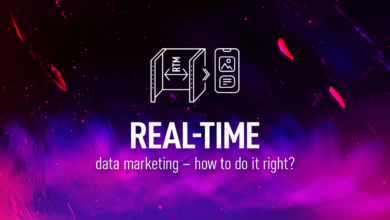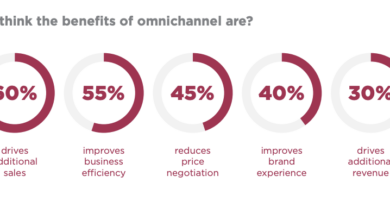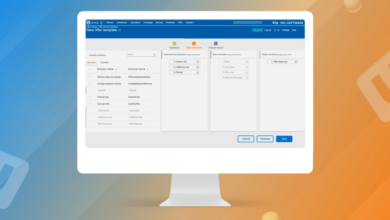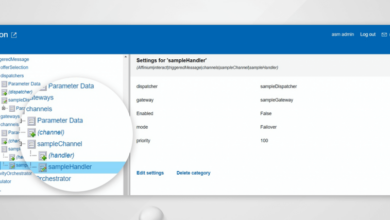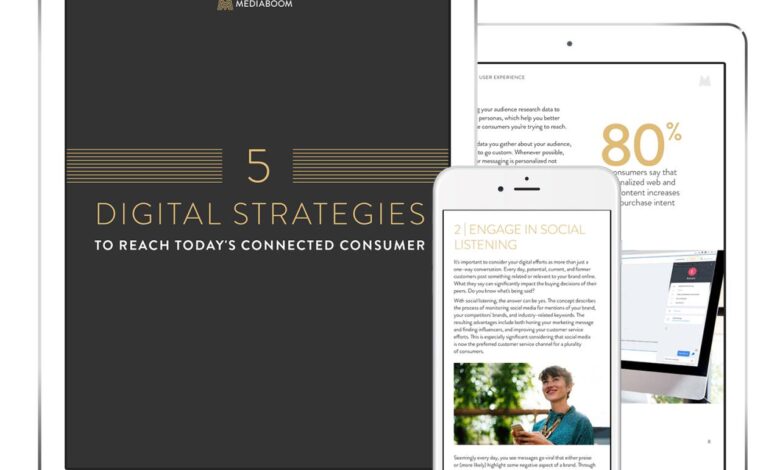
Mastering Digital Messaging Key Strategies and Future Trends
Mastering digital messaging key strategies and future trends isn’t just about sending messages; it’s about crafting compelling narratives that resonate with your audience. In today’s hyper-connected world, understanding the nuances of different platforms, from email to social media to the burgeoning metaverse, is crucial for success. This journey explores the art of effective messaging, from crafting concise and engaging content to leveraging data analytics for optimal results.
We’ll delve into the power of personalization, the importance of A/B testing, and the ethical considerations that shape this ever-evolving landscape. Get ready to unlock the potential of digital messaging and navigate its exciting future.
We’ll cover everything from defining a robust digital messaging strategy and understanding the unique strengths of various platforms, to crafting compelling messages that grab attention and drive engagement. We’ll also explore the critical role of data analysis in optimizing your campaigns and discuss the exciting implications of emerging technologies like AI and the metaverse on the future of communication.
This isn’t just a guide; it’s a roadmap to mastering the art of digital conversation.
Defining Effective Digital Messaging
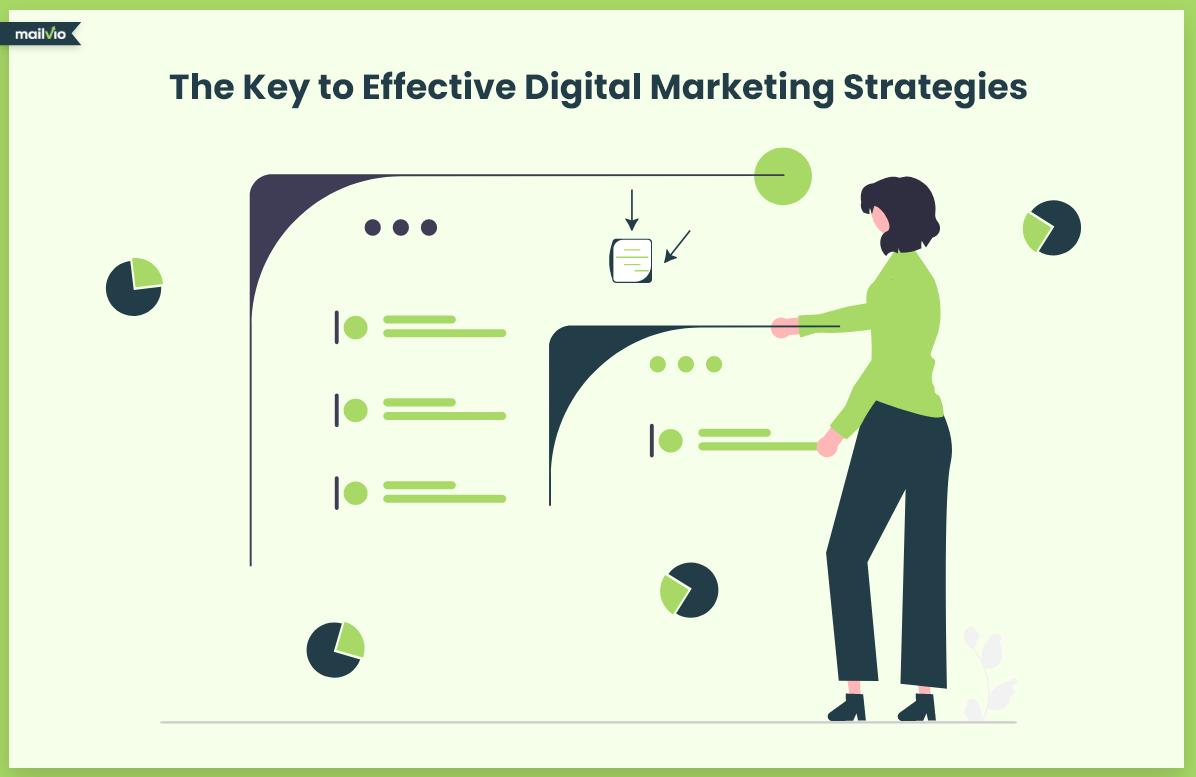
Crafting effective digital messaging isn’t just about sending out messages; it’s about strategically connecting with your audience to achieve specific goals. A well-defined strategy considers the nuances of different platforms, targets the right people, and delivers compelling content at the right time. This ensures maximum impact and a strong return on investment.
Core Components of a Successful Digital Messaging Strategy
A successful digital messaging strategy hinges on several key components working in harmony. First, you need a clear understanding of your target audience – their demographics, interests, online behavior, and preferred communication channels. Second, define your objectives. What do you want to achieve with your messaging? Are you aiming for increased brand awareness, lead generation, or driving sales?
Third, develop compelling and consistent messaging that aligns with your brand identity and resonates with your audience. This includes using the right tone of voice and visual elements. Finally, implement a robust analytics system to track your results, allowing you to optimize your strategy over time.
Messaging Platform Differences and Optimal Use Cases
Different platforms serve distinct purposes. Email marketing excels at nurturing leads and delivering detailed information, perfect for newsletters or promotional offers. SMS messaging is ideal for urgent updates, confirmations, or short, impactful messages due to its immediate delivery and high open rates. Social media platforms, like Facebook, Instagram, and Twitter, offer opportunities for engaging with audiences in a more informal and interactive manner, fostering community and building brand loyalty.
The choice depends heavily on your target audience and campaign goals. For instance, a luxury brand might prioritize email and Instagram for visual storytelling, while a fast-food chain might focus on SMS for quick promotions and Twitter for immediate customer service.
The Importance of Audience Segmentation in Crafting Targeted Messages
Audience segmentation is paramount for effective digital messaging. Instead of broadcasting the same message to everyone, segment your audience based on demographics, behavior, interests, and purchase history. This allows you to tailor your messaging to resonate with specific groups, increasing engagement and conversion rates. For example, a clothing retailer might segment its audience by age and gender to send targeted promotions for specific clothing lines.
A travel agency might segment based on past travel destinations and preferred travel styles to offer personalized recommendations. This level of personalization significantly improves the effectiveness of your campaigns.
Comparison of Popular Messaging Platforms
| Platform | Strengths | Weaknesses | Optimal Use Cases |
|---|---|---|---|
| High reach, detailed content, personalization options, analytics tracking | Requires email addresses, can be filtered as spam, lower open rates compared to SMS | Newsletters, promotional campaigns, lead nurturing, customer support | |
| SMS | High open rates, immediate delivery, short and impactful, good for time-sensitive information | Character limits, limited creative options, potential for annoyance if overused | Appointment reminders, order confirmations, urgent updates, short promotions |
| Large user base, diverse targeting options, strong visual capabilities, community building | High level of competition, algorithm changes can impact reach, requires consistent engagement | Brand awareness, lead generation, community management, interactive campaigns | |
| Highly visual platform, strong influencer marketing potential, ideal for showcasing products | Requires high-quality visual content, limited text capabilities, algorithm-dependent reach | Product promotion, brand storytelling, influencer collaborations, visual marketing campaigns |
Crafting Compelling Messages

In the digital age, where attention spans are shrinking and information overload is rampant, crafting compelling messages is paramount for success. Your message needs to cut through the noise and resonate with your audience, whether it’s a potential customer, a colleague, or a friend. This involves understanding your audience, choosing the right tone, and employing effective storytelling techniques.
This section explores various aspects of crafting impactful digital messages.
Effective digital messaging hinges on understanding your audience and tailoring your message to their specific needs and preferences. This includes considering their demographics, interests, and the platform you’re using. A formal tone might be suitable for a business proposal, while a more informal approach could work better for a social media post. Persuasive messaging focuses on convincing the audience to take a specific action, while informative messaging aims to educate and share knowledge.
Choosing the right style is crucial for maximizing impact.
Messaging Styles and Their Applications
Different messaging styles achieve different goals. A formal style, characterized by precise language and a professional tone, is ideal for official communications like business emails or legal documents. For instance, an email to a potential investor would require a formal tone, outlining the business plan with clear, concise language and avoiding slang or colloquialisms. Conversely, an informal style, using casual language and a friendly tone, is better suited for engaging with audiences on social media or in personal emails.
Think of a friendly welcome message to new followers on Instagram. Persuasive messaging utilizes techniques like highlighting benefits, addressing objections, and employing strong calls to action, such as an email promoting a limited-time discount. Informative messaging focuses on providing valuable information, such as a blog post explaining a new product feature. The key is to match the style to the context and audience.
Best Practices for Writing Clear, Concise, and Engaging Digital Messages
Clarity, conciseness, and engagement are crucial for effective digital messaging. Avoid jargon and overly complex sentences. Use strong verbs and active voice to make your writing more dynamic. Break up long paragraphs into shorter, more digestible chunks. Incorporate visuals like images or videos to enhance engagement.
Mastering digital messaging means understanding evolving strategies and anticipating future trends. This includes thinking about how to build robust, scalable applications to manage these messages, which is where learning about domino app dev, the low-code and pro-code future , becomes crucial. Ultimately, efficient app development directly impacts the success of your digital messaging initiatives, shaping how effectively you connect with your audience.
Always proofread your message carefully before sending to ensure it’s free of errors. A well-structured message, with clear headings and bullet points where appropriate, improves readability. Consider using emojis sparingly to add personality and emotion, but avoid overusing them, as it can appear unprofessional.
The Role of Storytelling in Creating Memorable Messages
Storytelling is a powerful tool for creating memorable and impactful messages. People connect with stories on an emotional level, making them more likely to remember and share your message. A well-crafted narrative can build trust, create empathy, and make your message more persuasive. For example, a company might share a customer success story to demonstrate the value of their product or service.
This relatable narrative resonates more deeply than simply listing product features. The narrative should have a clear beginning, middle, and end, with relatable characters and a compelling plot.
Sample Email Campaign
Subject: Unlock Your Creative Potential with [Product Name]!Body:Hi [Name],Remember that frustrating feeling of staring at a blank page, struggling to bring your creative vision to life? We understand. That’s why we created [Product Name], a tool designed to help you unleash your inner artist and overcome creative blocks.[Insert a short, compelling story about a person who overcame a creative challenge using your product.
E.g., “Sarah, a freelance graphic designer, was facing a tight deadline and feeling overwhelmed. Using [Product Name]’s intuitive interface and powerful features, she was able to complete her project not only on time, but also exceeded her client’s expectations.”][Product Name] offers [list key features and benefits with bullet points].Ready to experience the difference?[Call to Action Button: Start Your Free Trial Today!]Sincerely,The [Your Company Name] Team
Optimizing Message Delivery and Timing
Getting your message to the right person at the right time is crucial for successful digital marketing. It’s not enough to craft compelling content; you need a strategic delivery system to maximize impact and achieve your campaign goals. This involves understanding your audience, leveraging data, and employing smart automation.A/B testing is the cornerstone of refining your messaging strategies.
By systematically testing different variations of your messages (subject lines, body copy, call-to-actions), you can identify what resonates most effectively with your target audience. This iterative process allows for continuous improvement and optimization, leading to higher engagement and conversion rates.
Key Metrics for Measuring Digital Messaging Campaign Effectiveness
Understanding which metrics matter most allows for data-driven decision-making. Key performance indicators (KPIs) provide valuable insights into the success of your campaigns. Tracking these metrics helps you understand what’s working and what needs adjustment.
- Open Rates: The percentage of recipients who opened your message. A low open rate might indicate issues with your subject line or sender reputation.
- Click-Through Rates (CTR): The percentage of recipients who clicked on a link within your message. A low CTR suggests problems with your call-to-action or the overall message relevance.
- Conversion Rates: The percentage of recipients who completed a desired action (e.g., made a purchase, signed up for a newsletter). This is the ultimate measure of campaign success.
- Bounce Rates: The percentage of emails that were not successfully delivered. High bounce rates suggest problems with your email list hygiene or email deliverability.
Automating Message Delivery and Personalization
Automation is key to efficient and effective digital messaging. Scheduling tools allow you to send messages at optimal times, ensuring maximum visibility. Furthermore, personalization dramatically improves engagement. By using data points like customer preferences and past interactions, you can tailor messages to resonate on an individual level. For example, an e-commerce site might send personalized product recommendations based on a customer’s browsing history.
Implementing a Robust Message Scheduling System
A well-structured message scheduling system is essential for maximizing campaign impact. Here’s a step-by-step guide:
- Define your goals and target audience: Clearly Artikel what you want to achieve with your messaging and who you’re targeting.
- Choose the right tools: Select email marketing platforms or other messaging tools that offer scheduling and automation capabilities. Many platforms integrate with CRM systems for personalized messaging.
- Segment your audience: Divide your audience into smaller, more targeted groups based on demographics, behavior, or preferences. This allows for more personalized messaging.
- Create a content calendar: Plan your messaging in advance, outlining the topics, timing, and target audience for each message. This ensures consistent and relevant communication.
- Schedule your messages: Use your chosen platform’s scheduling features to automate the delivery of your messages at optimal times. Consider A/B testing different send times to determine what works best.
- Monitor and analyze results: Track your key metrics (open rates, CTR, conversion rates) to assess the effectiveness of your scheduling strategy and make necessary adjustments.
Leveraging Data and Analytics
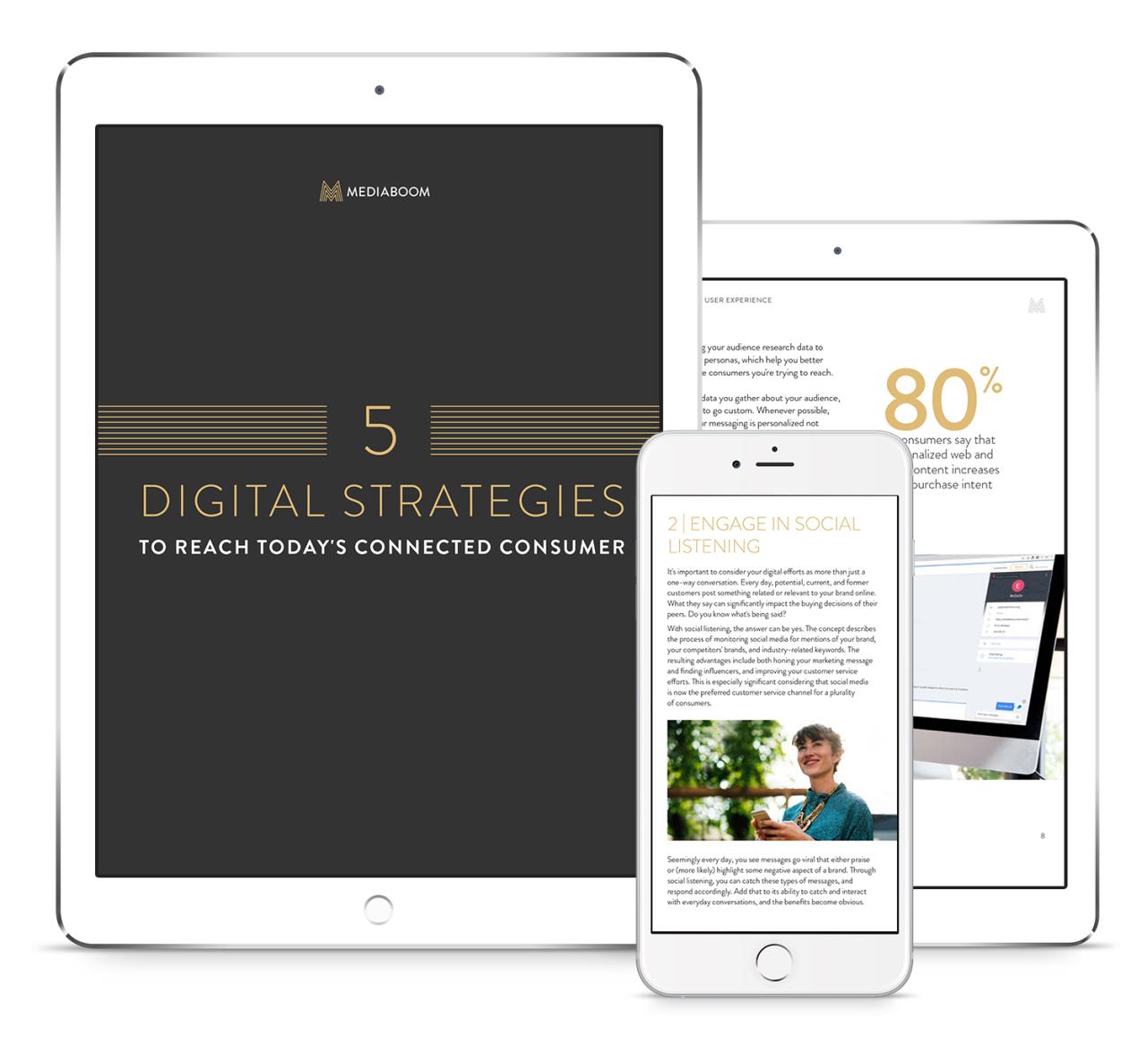
Effective digital messaging isn’t just about crafting compelling words; it’s about understanding your audience deeply. Data and analytics provide the crucial insights needed to personalize messages, optimize campaigns, and ultimately, achieve a higher return on investment. By systematically collecting and analyzing data, you can move beyond guesswork and build a data-driven messaging strategy.Data-driven messaging allows for continuous improvement. Analyzing campaign performance reveals what resonates with your audience and what doesn’t.
This iterative process allows you to refine your approach over time, maximizing impact and minimizing wasted resources. Understanding how your audience interacts with your messages across different channels provides a holistic view of your marketing efforts, enabling more strategic allocation of resources.
Collecting and Analyzing Audience Data
Gathering data from your various messaging platforms is the first step. This includes analyzing metrics such as open rates, click-through rates, conversion rates, and message engagement (likes, shares, replies). For example, a low open rate might suggest a subject line issue, while a high click-through rate but low conversion rate could indicate a problem with the landing page or call to action.
Analyzing this data reveals patterns in audience behavior. Are certain demographics more responsive to specific types of messages? What times of day yield the highest engagement? By identifying these trends, you can tailor future messages for maximum impact.
Improving Messaging Effectiveness and ROI with Data Insights
Once you have collected and analyzed your data, you can use the insights to refine your messaging strategy. For instance, if data shows that shorter, more concise messages perform better than longer ones, you can adjust your messaging style accordingly. Similarly, if specific s or calls to action generate higher conversion rates, you can incorporate them more frequently. Tracking key performance indicators (KPIs) like cost per acquisition (CPA) and return on ad spend (ROAS) allows you to measure the effectiveness of your messaging campaigns and make data-backed decisions about budget allocation.
For example, if a particular messaging channel consistently delivers a low ROI, you can reallocate resources to more effective channels.
Integrating Messaging Data with Other Marketing Channels
Integrating data from your messaging platforms with other marketing channels, such as email marketing, social media, and website analytics, provides a comprehensive view of the customer journey. For example, you might use data from your SMS campaigns to segment your email list, sending targeted messages to users who have previously engaged with your SMS marketing. Similarly, website analytics can inform your messaging strategy by revealing what content resonates most with your audience on your website.
This holistic approach enables a more personalized and effective marketing strategy across all touchpoints.
Data Flow from Messaging Platforms to Analytical Dashboards
Imagine a visual representation: The data originates from various messaging platforms (e.g., SMS, WhatsApp, in-app messaging). Each platform feeds data into a central data warehouse. This warehouse acts as a collection point for all messaging data, cleaned and standardized. From the data warehouse, data is then fed into analytical dashboards. These dashboards provide interactive visualizations and reports, allowing marketers to easily analyze key metrics and identify trends.
For example, one dashboard might display open rates and click-through rates across different messaging platforms, while another might show conversion rates broken down by demographic segments. The dashboards then allow for data export for further analysis or reporting. This entire process is automated, ensuring that data is consistently collected, processed, and made available for analysis in real-time.
Emerging Trends in Digital Messaging
The landscape of digital messaging is constantly evolving, driven by technological advancements and shifting consumer preferences. Understanding these emerging trends is crucial for businesses to remain competitive and effectively engage their audiences. This section explores some of the key developments shaping the future of digital communication.
Artificial Intelligence’s Impact on Digital Messaging
AI is rapidly transforming digital messaging, enhancing efficiency and personalization. AI-powered tools analyze vast amounts of data to understand customer behavior, preferences, and needs. This allows businesses to tailor their messages for maximum impact, offering personalized recommendations, targeted promotions, and proactive customer service. For example, AI-driven chatbots can handle routine inquiries, freeing up human agents to focus on more complex issues.
Predictive analytics, another AI application, can anticipate customer needs and send timely, relevant messages, improving customer satisfaction and loyalty. The use of natural language processing (NLP) allows for more natural and human-like interactions between businesses and their customers through chatbots and automated messaging systems.
The Rise of Conversational Marketing and Chatbots, Mastering digital messaging key strategies and future trends
Conversational marketing, which focuses on building relationships through two-way communication, is gaining significant traction. Chatbots are at the heart of this trend, providing instant, automated responses to customer inquiries across various platforms. Well-designed chatbots can handle a wide range of tasks, from answering frequently asked questions to processing orders and providing technical support. Beyond simple question-answering, advanced chatbots can engage in more complex conversations, guiding customers through the sales funnel and building brand loyalty.
For instance, a clothing retailer might use a chatbot to help customers find the perfect outfit by asking about their style preferences and body type.
Comparison of Messaging Apps for Business Communication
Businesses utilize various messaging apps to reach their target audiences. WhatsApp, with its massive user base and strong encryption, is popular for direct customer communication and personalized marketing campaigns. Facebook Messenger, integrated with Facebook’s advertising platform, allows for seamless targeting and retargeting. Telegram, known for its speed and features like channels and bots, is often used for community building and broadcasting updates.
Each platform offers unique advantages and disadvantages; the optimal choice depends on the specific business needs and target audience. For example, a business targeting a younger demographic might favor Instagram’s direct messaging feature, while a business focused on professional networking might prioritize LinkedIn’s messaging capabilities.
Potential of Web3 and the Metaverse in Reshaping Digital Messaging
Emerging technologies like Web3 and the metaverse hold the potential to revolutionize digital messaging. Web3, with its decentralized nature and focus on user ownership of data, could lead to more secure and privacy-focused messaging platforms. The metaverse, a persistent, shared virtual world, offers new avenues for immersive and interactive communication. Imagine attending virtual conferences or product launches, interacting with brands and other users through avatars and engaging in real-time conversations within simulated environments.
The integration of blockchain technology could enable secure and transparent transactions within these virtual spaces, further enhancing the messaging experience. For example, a luxury brand might host exclusive virtual events in the metaverse, allowing customers to interact with products and brand ambassadors in a unique and engaging way.
Ensuring Compliance and Ethical Considerations: Mastering Digital Messaging Key Strategies And Future Trends
Navigating the digital landscape requires a keen awareness of legal and ethical responsibilities. Sending messages electronically isn’t just about crafting compelling content; it’s about doing so responsibly, respecting user rights, and adhering to relevant regulations. Ignoring these aspects can lead to hefty fines, reputational damage, and the erosion of trust with your audience.The legal framework surrounding digital messaging is complex and varies by jurisdiction.
Key regulations like the General Data Protection Regulation (GDPR) in Europe and the California Consumer Privacy Act (CCPA) in the United States place significant obligations on businesses regarding the collection, use, and protection of personal data. Understanding these laws is crucial for ensuring compliance.
Relevant Regulations and Legal Considerations
GDPR and CCPA are pivotal examples of data privacy regulations. GDPR mandates explicit consent for data processing, provides individuals with rights to access, rectify, and erase their data, and imposes strict rules on data transfers outside the European Economic Area. CCPA, while having a narrower scope, grants California residents similar rights, including the right to opt-out of the sale of their personal information.
Beyond these, other regional regulations and industry-specific guidelines may apply, necessitating a thorough understanding of the legal landscape relevant to your operations. Non-compliance can result in substantial financial penalties and legal repercussions. For example, a company failing to obtain proper consent under GDPR could face fines of up to €20 million or 4% of annual global turnover, whichever is higher.
Best Practices for Maintaining User Privacy and Data Security
Protecting user data is paramount. Implementing robust security measures, such as encryption and access controls, is essential. Regular security audits and penetration testing help identify vulnerabilities before they can be exploited. Data minimization – collecting only the necessary data – reduces the risk of breaches and simplifies compliance. Transparent privacy policies clearly explaining how data is collected, used, and protected are also crucial.
Furthermore, incorporating privacy-enhancing technologies, such as differential privacy or federated learning, can help protect individual data while still allowing for valuable data analysis. A breach of data security can lead to loss of consumer trust and significant financial losses.
Strategies for Building Trust and Transparency with Audiences
Transparency fosters trust. Being upfront about data collection practices, providing clear and accessible privacy policies, and offering users control over their data are key strategies. Regular communication about security measures and any incidents (should they occur) demonstrates commitment to user privacy. Seeking independent audits or certifications, such as ISO 27001, can further enhance credibility. Building trust takes time and consistent effort, but it’s an invaluable asset in the long run.
For instance, a company openly communicating about a data breach and taking swift action to mitigate the damage is far more likely to retain customer trust than one that tries to conceal the incident.
Examples of Ethical Dilemmas in Digital Messaging and Suggested Solutions
Ethical dilemmas frequently arise. For example, using personal data for targeted advertising without explicit consent raises privacy concerns. The solution lies in obtaining informed consent and offering users choices about how their data is used. Another dilemma is the spread of misinformation or manipulative messaging. Implementing robust fact-checking processes and promoting media literacy can help combat this.
Finally, using AI-powered tools to personalize messages raises concerns about bias and fairness. Addressing these requires careful algorithm design and ongoing monitoring to identify and mitigate potential biases. A company using AI to target job advertisements could inadvertently discriminate against certain demographics if the algorithm is not carefully designed and monitored. Transparency and proactive mitigation strategies are key to resolving these ethical challenges.
Last Word
Mastering digital messaging is a continuous journey, one that requires adaptability, creativity, and a deep understanding of your audience. By combining strategic planning with data-driven insights and a commitment to ethical practices, you can transform your communication efforts and build meaningful connections. The future of digital messaging is dynamic and exciting, and with the strategies Artikeld here, you’ll be well-equipped to navigate this ever-evolving landscape and achieve your communication goals.
Remember, the most effective messages are those that resonate on a human level, forging genuine connections and building lasting relationships.
FAQ Compilation
What’s the best platform for reaching Gen Z?
TikTok and Instagram are currently highly effective for reaching Gen Z, due to their visual nature and short-form video content.
How can I measure the success of my messaging campaigns beyond open and click-through rates?
Consider website traffic, lead generation, sales conversions, and brand mentions to gain a holistic view of campaign performance.
What are some examples of ethical dilemmas in digital messaging?
Examples include using misleading information, exploiting personal data, or failing to obtain proper consent for marketing communications.
How can I avoid being flagged as spam?
Avoid using spam trigger words, get consent before sending messages, and maintain a high level of engagement with your audience to build trust.
